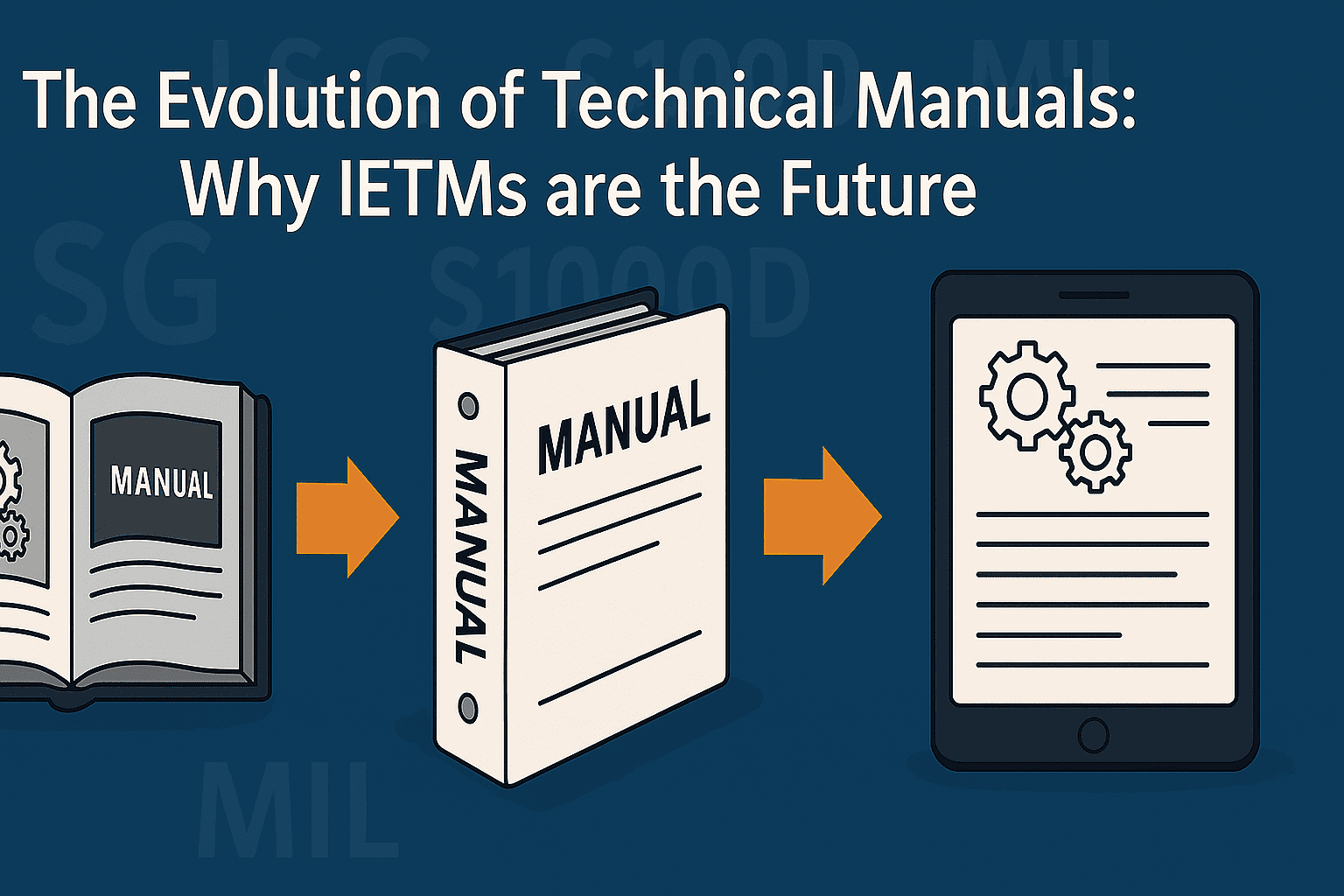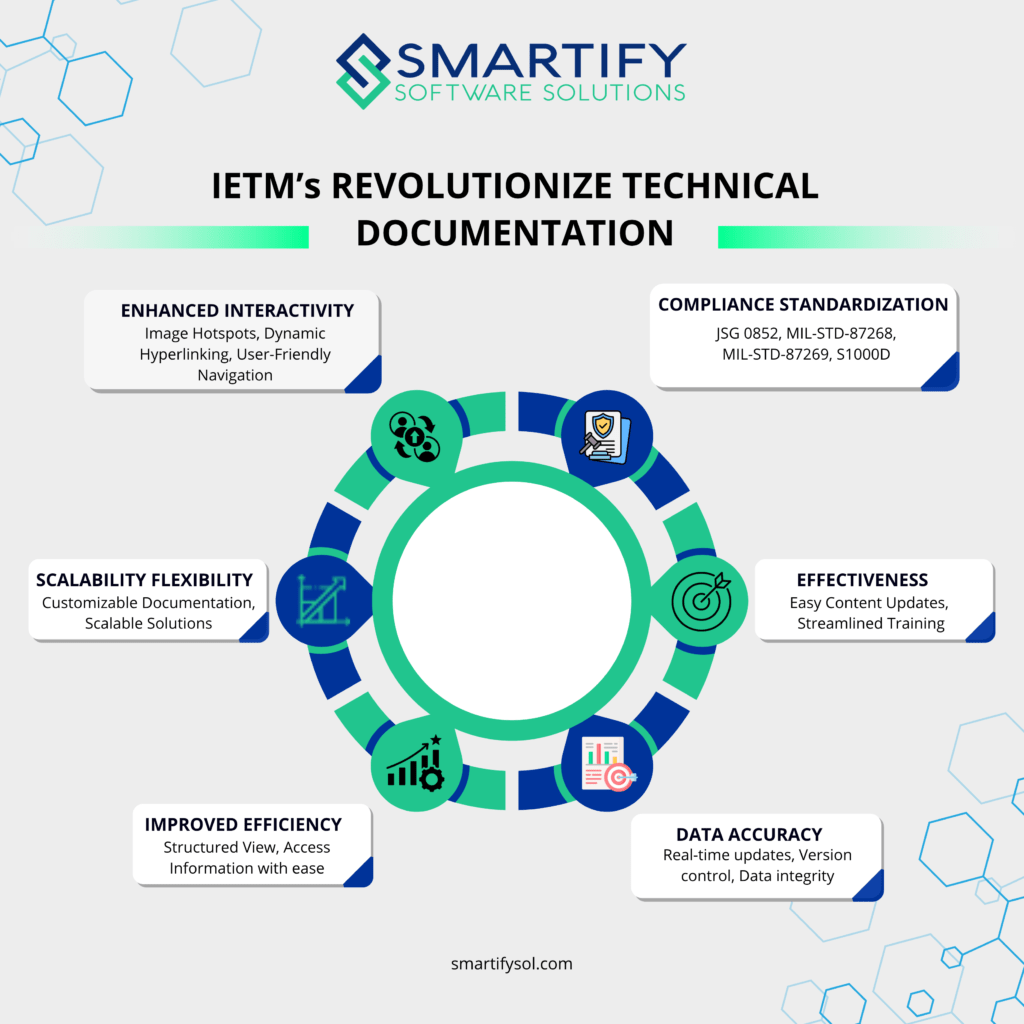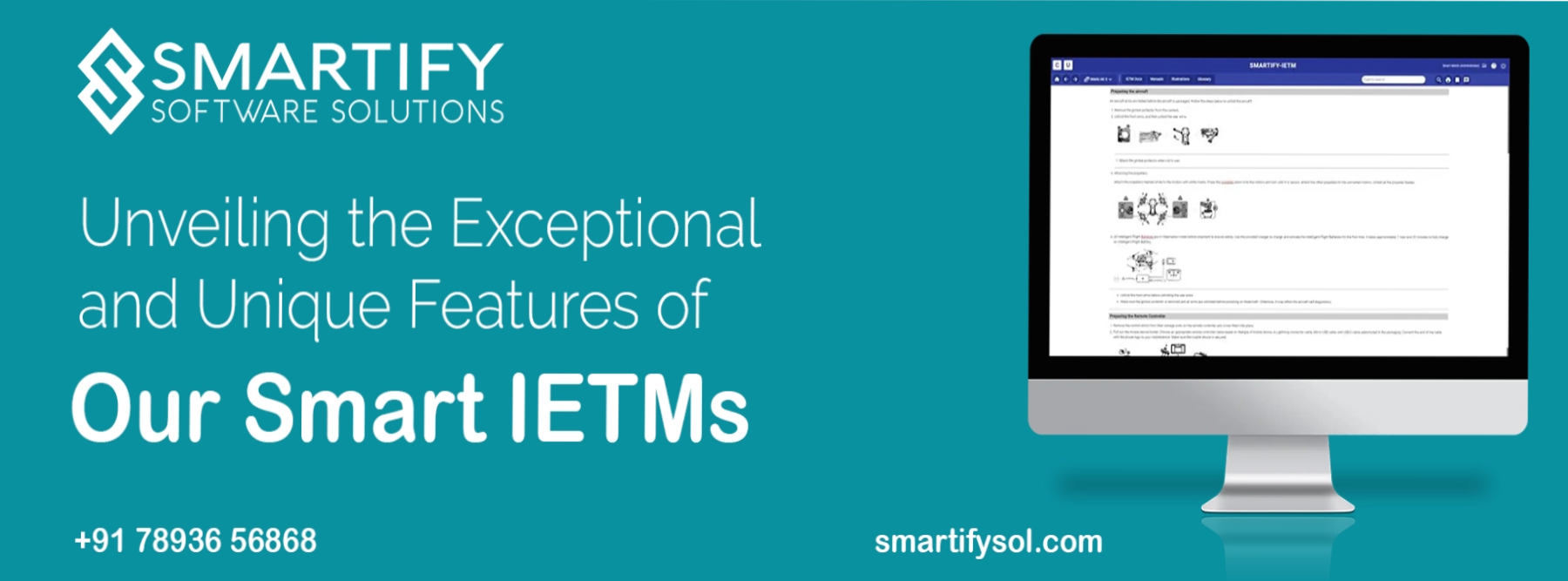In a fast-paced world, traditional-based technical manuals are becoming a relic of the past. Enter Interactive Electronic Technical Manuals (IETMs) a changer for businesses seeking efficiency, accuracy, and enhanced user experience in their documentation.
IETMs are just digitized PDFs; they are dynamic, interconnected information systems designed to simplify complex technical data. From integrated modules and categories for effortless navigation to intelligent browse functionalities, IETMs elevate the way we access and utilize critical information.
Benefits of IETMs:
Enhanced Interactivity:
Features like spotting on illustrations and dynamic hyperlinking allow users to find relevant information, reducing downtime and errors quickly.
Improved Efficiency:
With organized PDF directories, structured data, and intelligent browse capabilities, users can access information much faster than sifting through physical manuals.
Compliance Standardization:
IETMs adhere to rigorous industry standards like JSG 0852, 87268, and 87269, ensuring reliability and interoperability.
Scalability Flexibility:
From simple electronically indexed pages to integrated database systems, Level 5 IETM), these manuals can be tailored to meet diverse organizational needs.
Effectiveness:
Reduced printing costs, easier updates, and streamlined training contribute to significant term savings. As industries increasingly embrace digital transformation, IETMs are proving to be an indispensable tool for maintenance, operations, and training. They empower users with instant access to precise information, leading to better making and operational excellence.
Data Accuracy:
Ensures that users receive precise, up-to-date technical information, minimizing operational errors. With features like version control and real-time updates, IETMs maintain consistency and reliability across all documentation.
Call to Action:
Is your organization still relying on outdated documentation? Explore the power of IETMs to streamline your operations and empower your workforce.
FAQs – The Evolution of Technical Manuals: Why IETMs Are the Future
Traditionally, technical manuals were delivered in the form of printed books or bulky binders. These print manuals were heavy, required physical storage, and were hard to update. Over time, organizations shifted to PDF-based digital manuals, but these were still static and lacked real-time updates, multimedia integration, and interactive navigation.
IETMs are digital, interactive manuals designed to replace traditional PDFs and print manuals. An IETM software solution is built using structured databases and allows hyperlinks, advanced search, multimedia integration (videos, schematics, 3D animations), and role-based access. They are widely adopted in defense documentation, aerospace maintenance manuals, and high-tech industries where complex equipment requires precise and accessible digital manuals.
IETMs are the future because they combine scalability, flexibility, and compliance with global military and industrial documentation standards. By replacing static documents, IETMs enable real-time updates, simplified content management, improved technician training, and faster troubleshooting. For industries like defense, aerospace, and heavy engineering, IETMs significantly reduce downtime and enhance operational efficiency.
Yes. IETMs are built to comply with international documentation standards such as:
a). JSG 0852 – Indian defense standard for electronic technical documentation
b). MIL-D-87268, MIL-D-87269, MIL-D-87270 – U.S. military standards for technical manuals
Compliance with these standards ensures that IETM software for defense and aerospace meets interoperability, security, and quality assurance requirements.






